 My daughter loves painting rocks, and leaving them to be picked up in public places. During her stay with me recently she encouraged me to join in, and I painted my first rock with her acrylic pens using one of the designs found in the Facebook Group ‘Love on the Rocks UK (Finding Rocks, Making Smiles).(see opposite). I found it easy to create something that I was pleased with, and felt encouraged to try painting from a photograph – I chose a seahorse.
My daughter loves painting rocks, and leaving them to be picked up in public places. During her stay with me recently she encouraged me to join in, and I painted my first rock with her acrylic pens using one of the designs found in the Facebook Group ‘Love on the Rocks UK (Finding Rocks, Making Smiles).(see opposite). I found it easy to create something that I was pleased with, and felt encouraged to try painting from a photograph – I chose a seahorse.
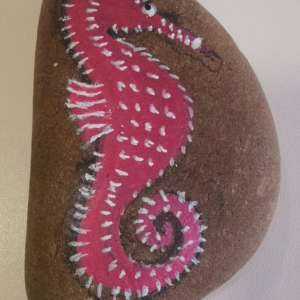 I was pleased with what I had painted, but wasn’t especially drawn to just leaving the rocks in places where they might be found – it felt pleasant but purposeless.
I was pleased with what I had painted, but wasn’t especially drawn to just leaving the rocks in places where they might be found – it felt pleasant but purposeless.
I then painted a salmon, because I lead a team of volunteers that monitor salmon and trout in the River Lune, and am acutely aware of their dwindling numbers and the damage we humans are doing to their habitat. 
I trained to deliver the ‘Work that Reconnects in 2009 with Joanna Macy at Findhorn in Scotland, and have used the ‘Cairn of Mourning’ as a component of these workshops several times.
The practice involves participants being invited to express their grief for what is happening to the world by going outside and find an object–say, a rock, a cluster of leaves, a stick– to symbolize what they mourn. They then participate in a ritual where they take it in turns to place their object on a pile in the centre of their room and express their feelings about what their object represents.
The ‘cairns’ thus formed are all temporary installations, so I had the idea of using painted rocks to form a more permanent ‘carin of mourning’.
 We live on the bank of the River Lune and I am a Director of Halton Lune Hydro, which fills up with rocks every few years, when there is a big storm. The rocks have to be dug out of the inlet and outlet and are deposited in a big pile nearby.
We live on the bank of the River Lune and I am a Director of Halton Lune Hydro, which fills up with rocks every few years, when there is a big storm. The rocks have to be dug out of the inlet and outlet and are deposited in a big pile nearby.
The rock pile gradually gets depleted by local people using them for their gardens and other building projects.
As an environmental activist I am well aware that we are experiencing sharp declines in our various species populations, so I decided to paint rocks that commemorated disappearing and endangered species.
Researching what to include in the project was complicated, as I wanted to include species that were not too obscure, and that were found in the UK. The most endangered UK bird is the Curlew, but where I live they are relatively common, but were an obvious choice to include.
Visiting the Lake District recently, there were notices declaring protected habitats for White Clawed Crayfish so they were another obvious inclusion.
My painted rocks
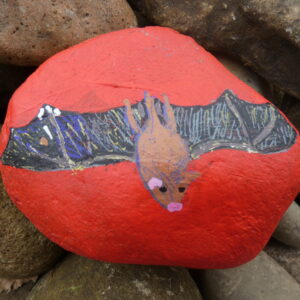

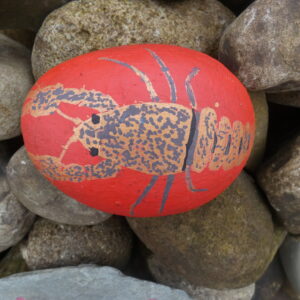
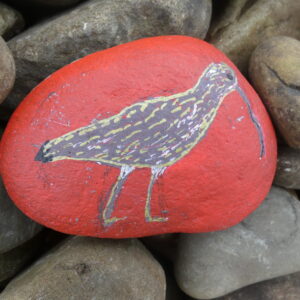
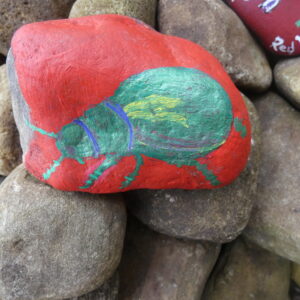
I then had the idea of running a workshop to involve others in the project, so I held this at Halton Mill on Saturday 18th February.
I prepared for it by printing some pictures of endangered species, and also having computers on hand for participants to research their own. One child decided she wanted to include coral, and another hedgehogs. Another child wanted to include Emus, but I explained that they were not endangered, but she was very happy with my suggestion of Puffins instead.
Adults and children participated, and once the stones were sprayed with varnish and dried, they were taken and placed on the cairn by the painters. (see the results in the gallery below).
Rocks painted in workshop
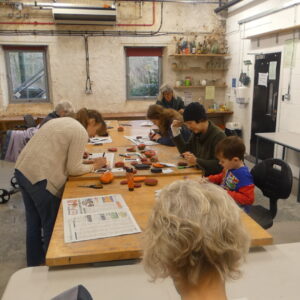
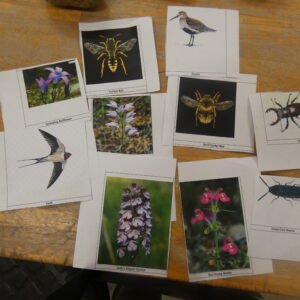
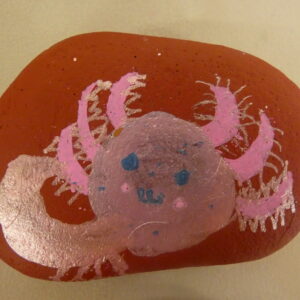

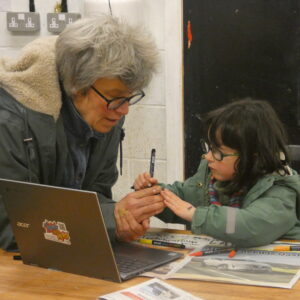
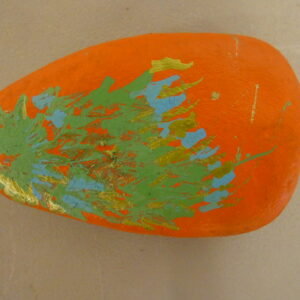
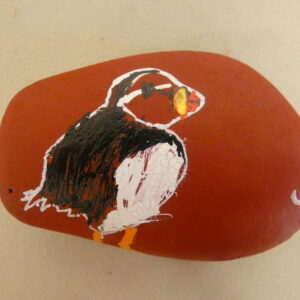

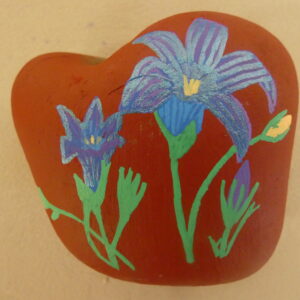
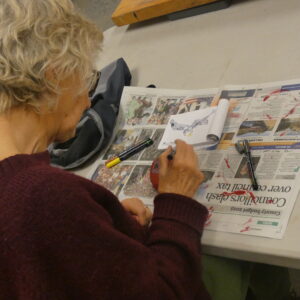

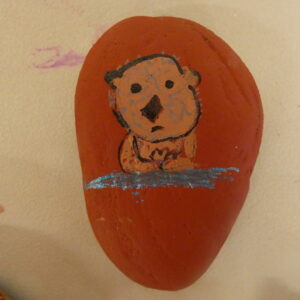

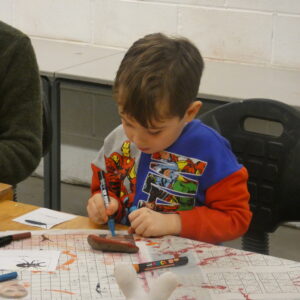

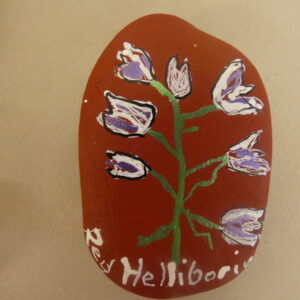
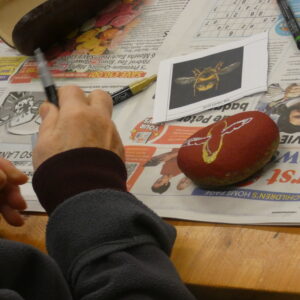
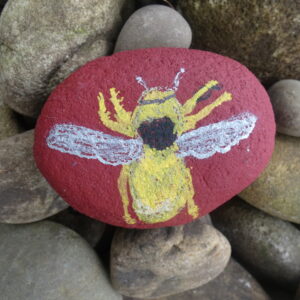
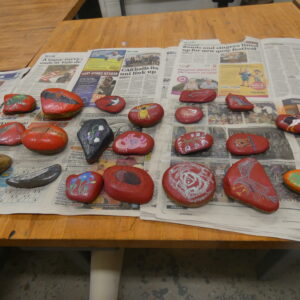
 I built the cairn with the help of 2 others near to the rock pile. I added a notice explaining what it is, including a web address for more information.
I built the cairn with the help of 2 others near to the rock pile. I added a notice explaining what it is, including a web address for more information.
I have had a lot of positive feedback both from workshop participants and from passers by. Children who painted rocks have wanted to know more about what ‘endangered species’ means, and passers by have commented that they appreciate both the cairn and the message that it conveys.
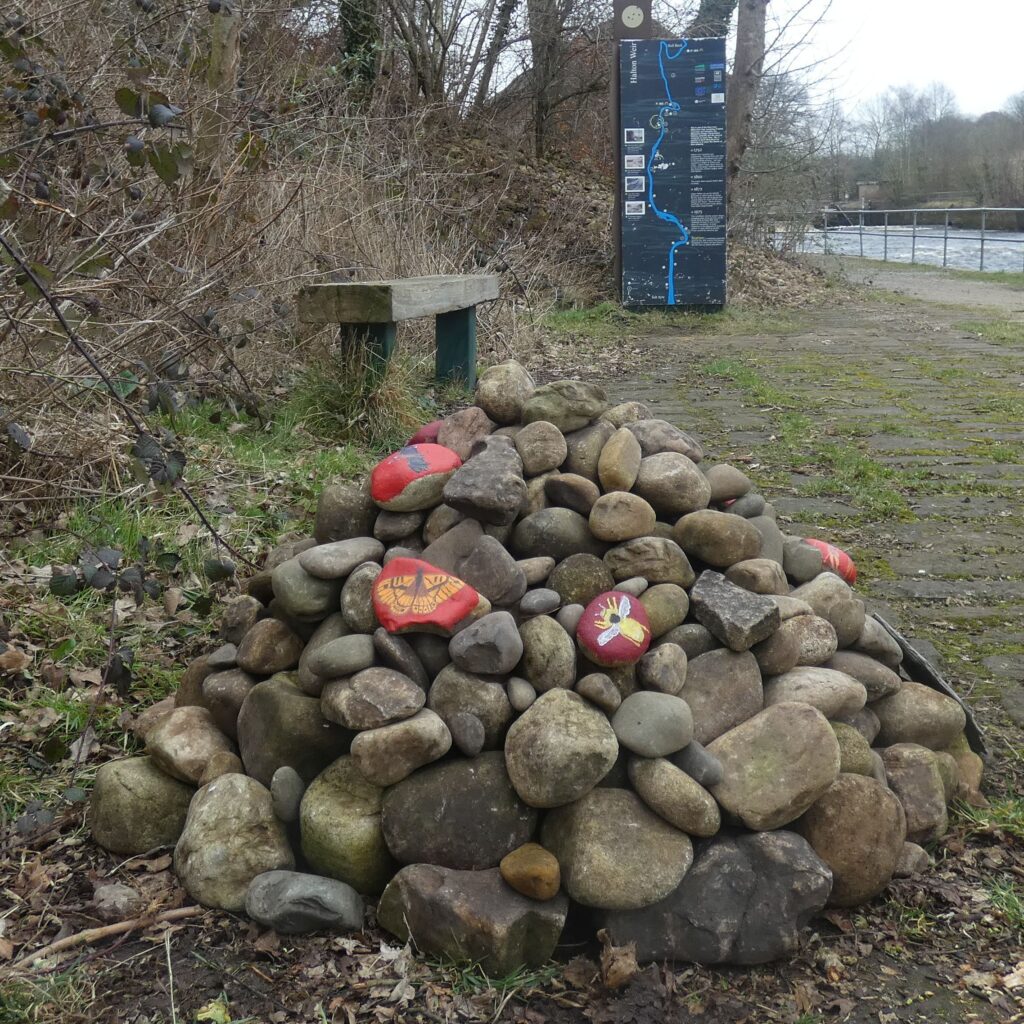
Further Development
I would like to make the cairn bigger, to accommodate more stones. I am also exploring more eco-friendly paint as ultimately the rocks will get washed back into the river, and the acrylic paint used will shed microplastics.
This is a process that could easily be picked up by others around the world, so I hope to develop some instructions about the process and the materials used.